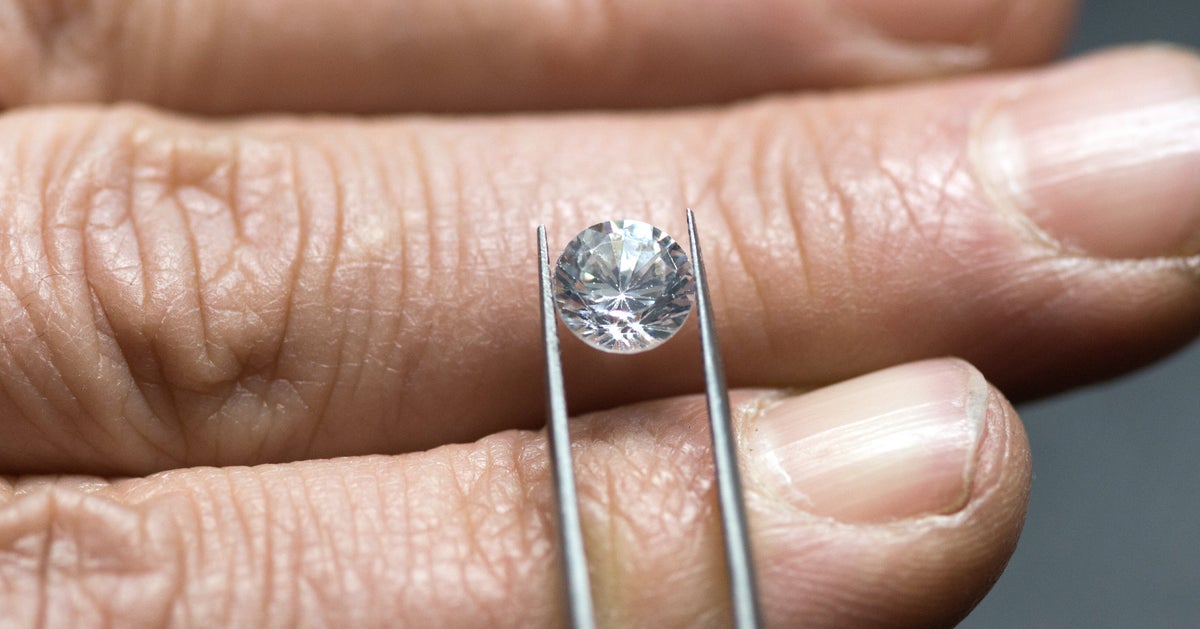If you have recently purchased a piece of fine jewelry with a diamond, chances are you have come across lab-grown diamonds as a more affordable option. This is especially true if you were in the market for an engagement ring. While a natural diamond halo ring with 2 carats may cost around $23,000, a lab-grown version of the same ring could cost $6,000 – a significant difference considering they are visually, chemically, and physically identical.
Lab-grown diamonds, also known as synthetic diamonds, are becoming increasingly popular due to their affordability compared to mined or natural diamonds. The issues of sustainability and ethics have also become top concerns for diamond shoppers, especially after the release of the film “Blood Diamond” in 2006, which shed light on the inhumane practices in traditional diamond mining.
However, when it comes to the differences between mined and lab-grown diamonds, especially in terms of ethics and sustainability, experts have a more nuanced perspective. We spoke to four industry experts to get a better understanding.
Lab-grown diamonds are created in a laboratory and often start as a small piece of a natural diamond. There are two main methods of producing lab-grown diamonds: high-pressure, high-temperature (HPHT) and chemical vapor deposition (CVD). The HPHT method involves replicating the conditions under which natural diamonds formed using heavy mechanical presses and intense heat. The CVD method superheats gas into plasma, releasing carbon atoms to create a diamond crystal at the atomic level. Both methods begin with a small piece of a mined diamond.
Despite the different processes, lab-grown diamonds are virtually indistinguishable from natural diamonds to the naked eye. Only sophisticated testing can tell them apart. Both types of diamonds have the same level of hardness according to the Mohs scale. Trained gemologists can identify small differences in inclusions and growth structure under extreme magnification, and lab-grown diamonds also carry a required inscription to differentiate them from natural diamonds.
One of the biggest differences between lab-grown and natural diamonds is the price. Lab-grown diamonds are significantly cheaper, allowing buyers to get more for their money. If both types of diamonds have the same ranking in terms of clarity, cut, carat, and color, lab-grown diamonds can be 20-30% cheaper on average, with the price difference increasing as the carat size goes up.
The price disparity is due to the rarity and history of mined diamonds, which are cosmic-level pieces of planetary history formed over centuries. Lab-grown diamonds offer an endless supply, while natural diamonds are being depleted and their prices continue to rise.
Resale value is another factor to consider. While lab-grown diamonds have no resale value, natural diamonds retain their value indefinitely.
However, the sustainability and ethical considerations of lab-grown and mined diamonds depend on the company’s process. The modern diamond industry has made significant strides in opposing conflict minerals and implementing sustainable practices. Some lab-grown diamond producers use renewable energies like hydro and solar power, and they can provide scientific proof of sustainability. It is essential to research the retailer and ask questions about the sourcing, manufacturing, and the use of carbon offsets when purchasing a lab-grown diamond.
As an alternative to mined diamonds, moissanite is another option that offers affordability. However, moissanite can be distinguished from a diamond with the naked eye due to its colorless appearance.
In conclusion, lab-grown diamonds are a more affordable option for buyers looking for visually identical alternatives to natural diamonds. However, considerations of ethics, sustainability, and resale value require careful research and assessment of the retailer’s practices.
Denial of responsibility! VigourTimes is an automatic aggregator of Global media. In each content, the hyperlink to the primary source is specified. All trademarks belong to their rightful owners, and all materials to their authors. For any complaint, please reach us at – [email protected]. We will take necessary action within 24 hours.


